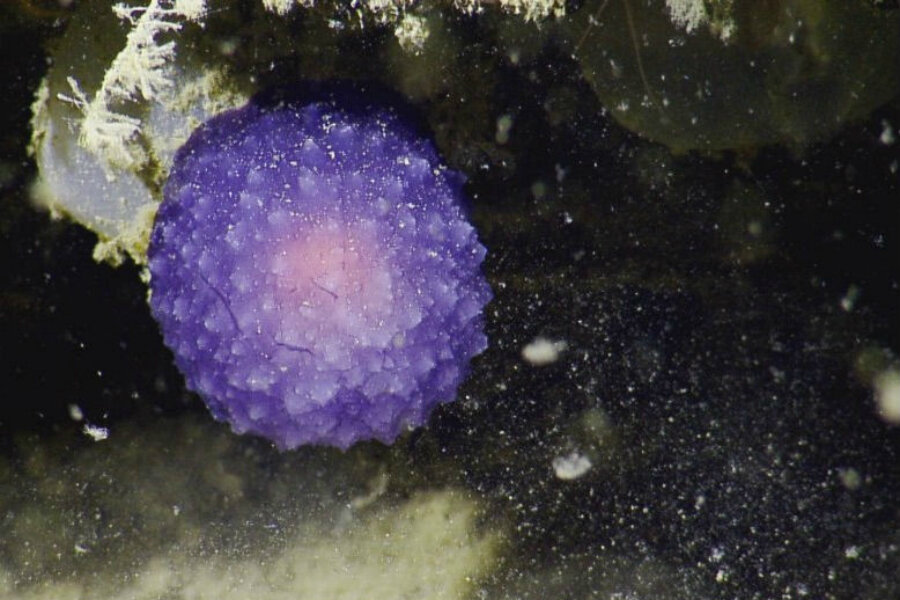Scientists spot strange purple orb on ocean floor. What could it be?
Loading...
Hidden among countless crabs and clams, something unusual grabbed the attention of researchers last week: a floating, purple blob.
The strange orb was over 5,000 feet below the surface of the ocean when it came into view. NOAA scientists aboard the Exploration Vessel Nautilus (E/V Nautilus) spotted the creature during a live broadcast from Nautilus’ remotely-operated Hercules submarine off the coast of California.
Researchers say the blob doesn’t resemble any known Pacific species, and it may even be a new species.
Nautilus scientists were surveying an underwater rock formation called the Arguello Canyon when they saw the strange little blob. They used a suction tool on the Hercules submarine to collect the creature, which was just two inches wide.
"I'm stumped," one researcher remarked upon spotting the weird blob during the live broadcast.
At first, they thought the creature might be an unknown type of nudibranch. Nudibranchs are a group of soft-bodied, often-colorful marine mollusks. Now researchers say the creature could be a kind of amorphous sea slug called a pleurobranch – but that’s still just a guess.
But "none of the known species of California pleurobranch are purple," Susan Poulton, a spokeswoman for the E/V Nautilus expeditions, told Live Science. So perhaps this is a new species to add to the family.
Unlike snails, which have external shells, pleurobranchids grow their shells within the body. This internal shell dissipates as the mollusk approaches adulthood, sometimes disappearing completely. Many pleurobranchids feed on plankton and produce chemical secretions for defense, according to a 1997 paper on the creatures.
Back on the vessel, the blob unfolded to reveal "two distinct lobes." Researchers sent the creature to the Harvard Museum of Comparative Zoology to shed more light on its identity – but not before taking RNA and DNA samples for independent analysis.
Even if the creature is a totally new species, it will be some time before scientists are comfortable giving it the designation. "Confirming it's a new species will take considerable months," Ms. Poulton said.
The Nautilus crew broadcasts many of its dives, and it was streaming live when the purple blob was found. But live video isn’t just for the entertainment of hobbyists and amateur scientists – it has also proven essential to researchers both on and off the roaming vessel. A large network of scientists communicate and work in tandem with the Nautilus team, pointing out specimen that on-board scientists might otherwise miss.
"We sort of sail with a science team of hundreds," Poulton explained.
E/V Nautilus is a research vessel operated by the nonprofit Ocean Exploration Trust. Research missions are directed by Robert Ballard, the Woods Hole oceanographer who discovered the Titanic wreckage in 1985.








